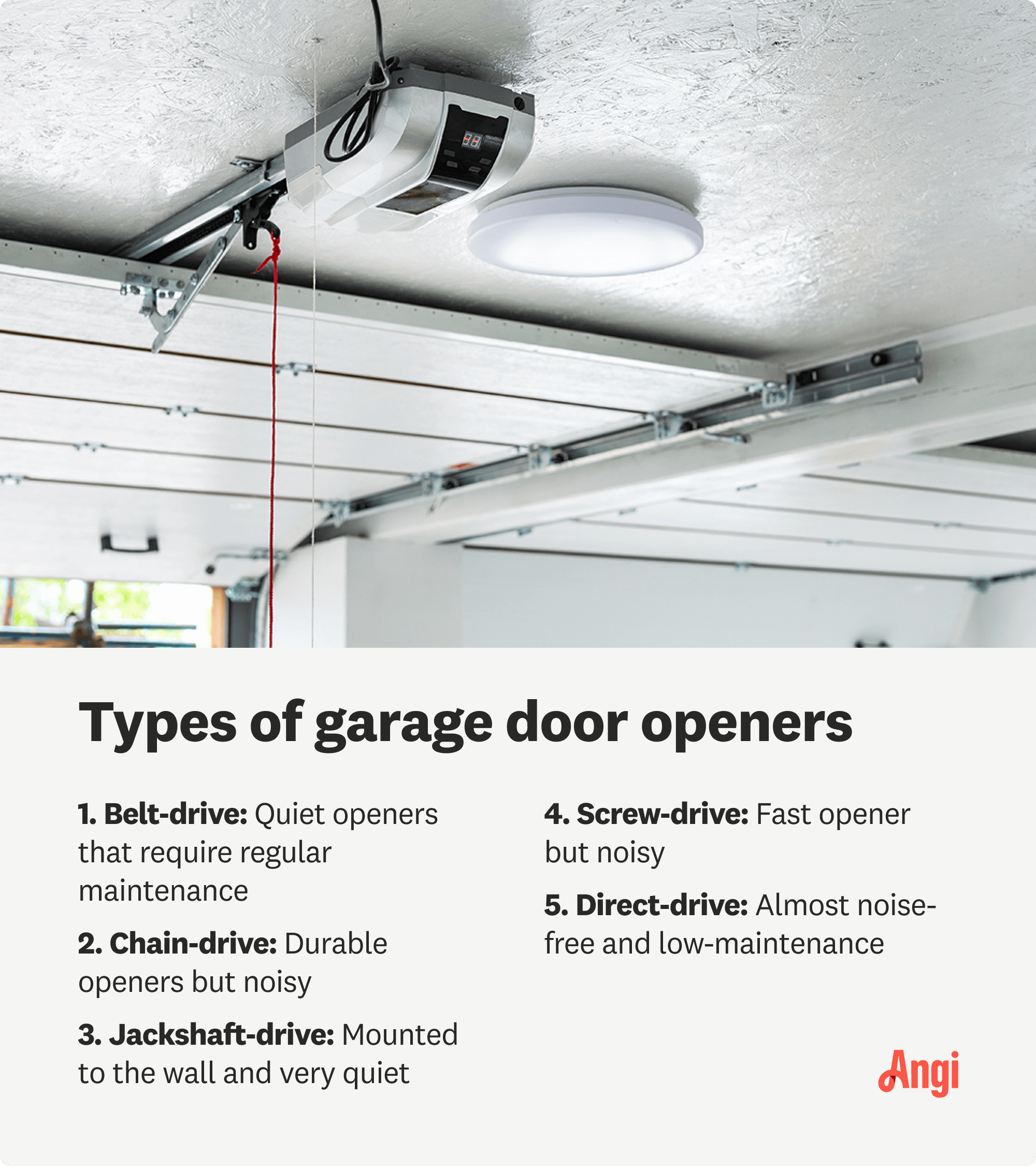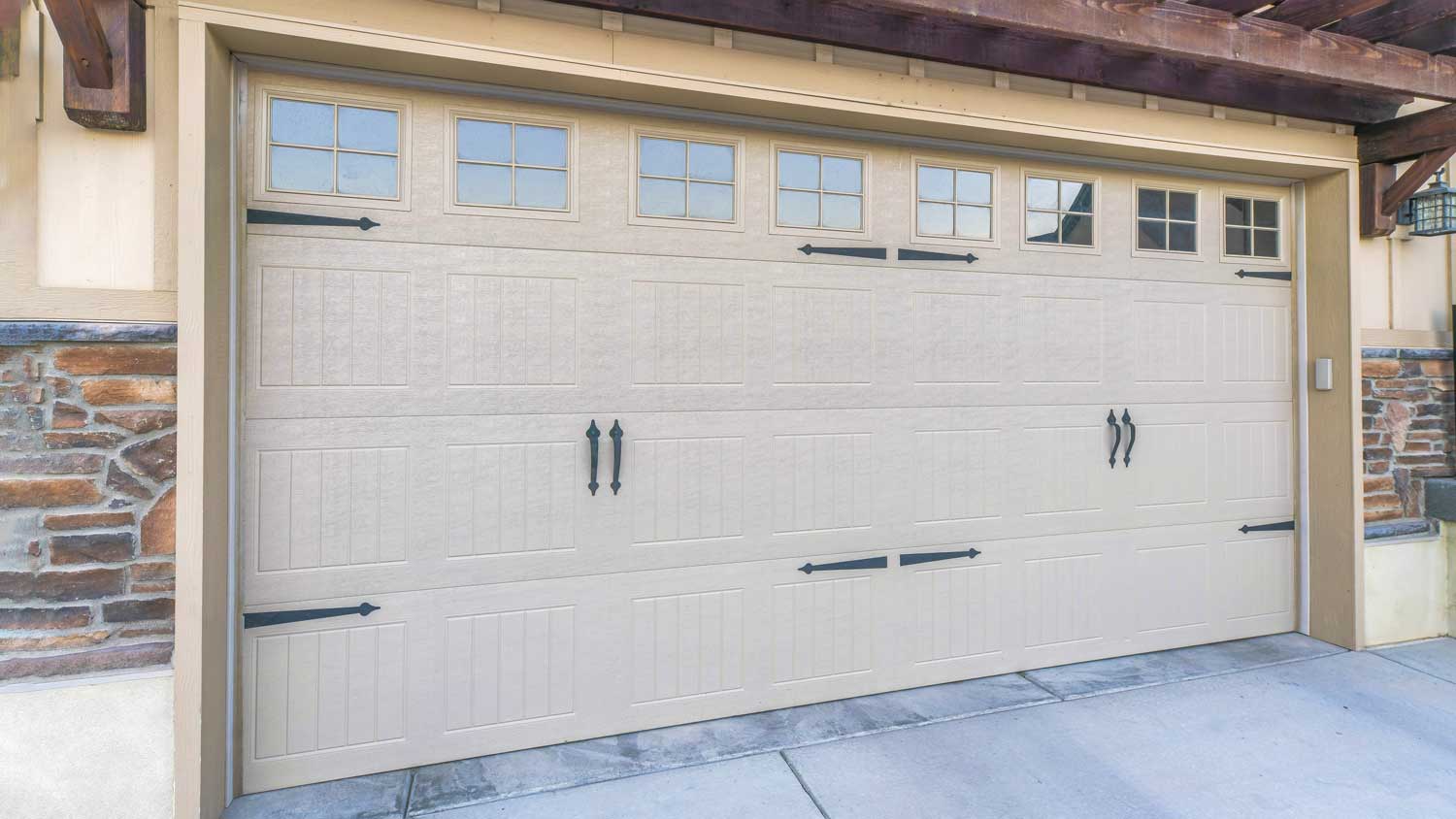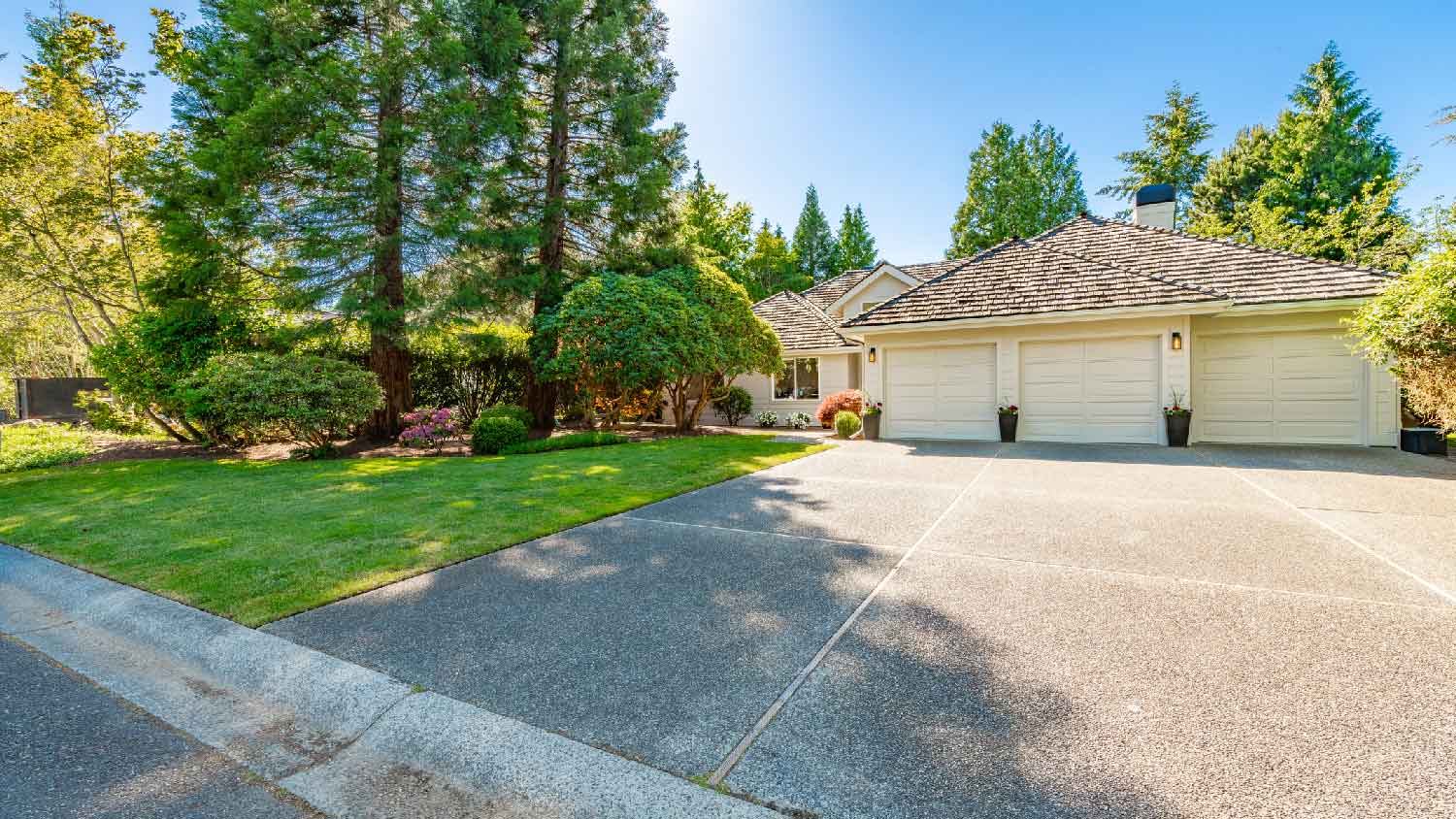How Much Does a Garage Door Opener Installation Cost? [2025 Data]
The cost to install a garage door opener is $378 on average, but it can cost between $218 and $539—or more if you splurge on extras.


On average, garage door opener installation costs $378 and will give you 10 to 15 years of smooth opening and closing with proper maintenance. Expect a range between $218 and $539 with the main influencing factors being the type of door, door features and accessories, and labor fees. While the opener itself can be anywhere from $200 to $900 or more, labor quickly catches up—two to six hours are often required at a rate between $60 and $80 per hour. Discover why replacing a garage door opener often isn’t as simple as it seems.
What Factors Impact the Cost to Install a Garage Door Opener?
Garage door opener installation costs primarily depend on which garage door opener you choose. Your overall bill varies based on the type of garage door opener, horsepower, and accessories.
Device
The contractor you’ll use will purchase your new garage door opener for you and include it in the total price. Depending on the type you want, you can expect to pay anywhere from $150 to $520 for the opener.
Also, you might need to pay for extra parts or equipment rentals, which can cost $50 to $75.
Labor
On average, the labor rate to install a garage door opener can range between $65 to $85 per hour for a two-to-six-hour job.
Horsepower
A garage opener’s horsepower rating refers to its lifting power. The type you need depends on the material your garage door is made of and whether it’s a one- or two-car garage. On the lower end of power and price, a ½ horsepower opener can cost as little as $100, while a much stronger 2 horsepower opener can range from $300 to $400. In general, the heavier the garage door, the more horsepower is needed.
Type
Another factor that plays a significant role in the cost is what type of opener you get. Choosing a simple garage door opener that just lets you leave your home as you please will have a lower price than an opener that offers more convenient features. For example, you’ll pay between $400 and $600 for a wall-mounted unit with ultra-quiet operations and smart features like automatic locking.
Number of Doors
If you live in a cold region or you just like the aesthetic, you might have a large garage with two small garage doors rather than one double door. While the smaller doors might not need openers with as strong horsepower, you’re still going to have the expense of installing one rather than two garage door openers, which will double your labor costs.
Accessories and Remotes
Some garage door openers come with an opener and remote control. Other options include Wi-Fi compatibility, LED lights, extra remote controls, backup batteries, built-in cameras, wireless keypad, etc. Units with all these bells and whistles can run between $400 and $600.
Additional Parts
Depending on the brand you opt for, some openers won’t have all the features you’re looking for. Some common features you might want to add to your garage door at the same time as having the opener installed include:
| Additional Parts | Price Range |
|---|---|
| Automatic Lock | $100–$300 |
| Battery Backup | $50–$150 |
| Garage Door Sensors | $50–$100 |
Removal of the Old Garage Door Opener
Most companies will include the cost of removing an old opener with labor, but some may charge extra. Unless you can tackle the work yourself, budget for an additional half-hour of labor for the removal. Often, garage door maintenance isn’t enough, and you need to scrap the entire system.
Safety Sensors
Some garage door openers don’t include sensors. And if you’re installing a new one in place of an old opener, it’s not guaranteed that your new system works with your already-installed sensors. New sensors cost between $25 to $50 for a pack of two.
Security
If you’ve maximized your parking space with one of our many creative garage storage ideas, having virtual eyes on your stuff can be worth the investment. One of the best security devices you can install on a garage door is a physical lock, as these cannot be hacked and don’t require electricity. Backing it up with one of the smart features below results in a near-bulletproof security system.
Smart Features
Nowadays, garage doors can be as smart as your smart doorbell or thermostat. If you want mobile control of your opener or enable automatic opening and closing, that’ll come at a premium cost—about $300 for ten years for the current leading subscription service. Remember that security outside the garage has different requirements than security inside, as anything outside will likely need to be waterproof and dust-resistant.
Extensions
If your garage is higher than average (anything over 8 ft. tall), you’ll need to extend your railings so they can reach. Extension kits cost between $45 to $85, depending on the height and material required.
How Much Does a Garage Door Opener Cost by Type?
Each type of garage door opener has its own benefits that can drastically change what you’ll pay. Below are details related to the most common types of garage door openers.

Belt-Drive
Belt-driven garage door openers use a belt to drive the trolley, which moves the garage door up and down. They can cost you anywhere between $160 and $350. Plus, they have fewer moving parts and are quieter than other openers, but do require regular maintenance.
Chain-Drive
Chain-drive garage door openers work similarly to belt-driven openers, but use a metal chain to open and close the door. Chain-driven openers cost $150 to $250. These openers are durable but, because of their chains, can be pretty noisy. If you go this route, you’ll need to brush up on how to lube a garage door.
Direct-Drive
Direct-drive openers use the motor that moves along a stationary chain to open and close the garage door. Because of their modern design, they’re practically noise-free and are low-maintenance. These openers cost $280 to $500.
Jackshaft-Drive
Unlike other openers that are mounted on your garage ceiling, jackshaft-drive garage door openers are mounted on your wall near your garage door. They’re connected to the garage door’s torsion bar and use springs to open and close the door. They cost $500 to $750. Similar to direct-drive openers, jackshaft-drive openers are ultra-quiet.
Screw-Drive
Screw-drive garage door openers use threaded metal rods that rotate to move your door up and down. They’re considered some of the fastest openers on the market, even though they require maintenance to prolong their lifespan. Also, they’re not exactly a quiet option. Screw-drive openers cost $150 to $300.
How Much Does Garage Door Opener Installation Cost by Location?
Where you live can impact labor costs and, in turn, how much you’ll pay to get a garage door opener installed. We've provided the average cost of installing a garage door opener by state to give you a good idea of what to expect:
DIY vs. Hiring a Pro
Are you skilled at working with mechanics and want to install a garage door opener yourself? It’s definitely possible, and if you have all the equipment needed, you could save yourself a hefty bill.
But if you don’t have the necessary material, expect to pay $400 to $1,500 for this project. You’ll also need to factor in the time it’ll take you to finish it.
A note on safety: Keep in mind that garage door openers have little room for installation errors. Improper installation can result in accidents that cause severe injury. So, ensure that you install a garage door opener’s auto-reverse to protect you and your family from harm. If you’re not comfortable installing that on your own, contact a local garage door opener repair pro to do the job for you.
How Angi Gets Its Cost Data
Home is the most important place on earth, which is why Angi has helped more than 150 million homeowners transform their houses into homes they adore. To help homeowners with their next project, Angi provides readers with the most accurate cost data and upholds strict editorial standards. We’ve surveyed over 10,000 real Angi customers about their project costs to develop the pricing data you see, so you can make the best decisions for you and your home. We pair this data with research from reputable sources, including the U.S. Bureau of Labor Statistics, academic journals, market studies, and interviews with industry experts—all to ensure our prices reflect real-world projects.
Want to help us improve our cost data? Send us a recent project quote to costquotes@angi.com. Quotes and personal information will not be shared publicly.
Frequently Asked Questions
When a professional installs a garage door opener, it takes two to six hours. This is because each opener type requires a slightly different installation approach. If any electrical rewiring is involved, expect the labor cost to climb, as electrical work requires more time and expertise. Expect to pay more if there are heavy parts that require multiple people to move the opener into place.
With average use, homeowners can expect garage door openers to last 10 to 15 years. Besides usage, its lifespan depends on whether you have the correct horsepower rating to satisfy your garage needs.
Your garage door type and material will determine how much horsepower it needs. Most single-car garages only require a one-half horsepower rating but can go to one horsepower. A two-car garage needs a rating of three-fourths to 1.25 horsepower. If you’re considering insulating your garage now or in the future, you’ll need a more powerful garage door opener.
The type of opener you have will determine the frequency and type of maintenance it requires. Refer to your user and warranty guide for specific care instructions.
If you have a chain-drive system, be aware this is the most maintenance-heavy option. The chain needs regular lubrication to keep its rails running smoothly.
General opener maintenance includes checking the chain or belt tension, inspecting for loose wiring or connections, and replacing weak batteries. Also, keeping the garage door rollers, cables, pulleys, and springs well lubricated and in good working order reduces any stress on the opener, increasing it.
To avoid any damage or extra work, your best bet is to swap out your rails during the installation process. While it may seem like the old and new rails are the same, there’s no real standard for garage door rails, so it’s not guaranteed to work.














